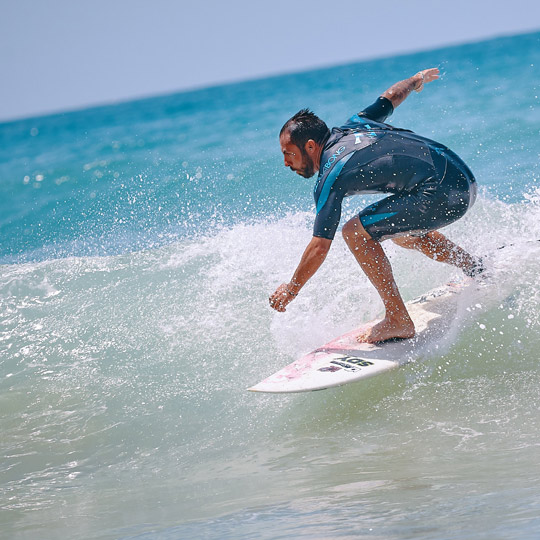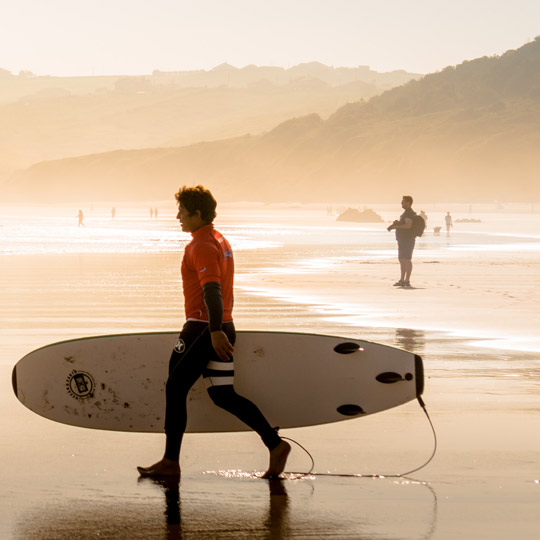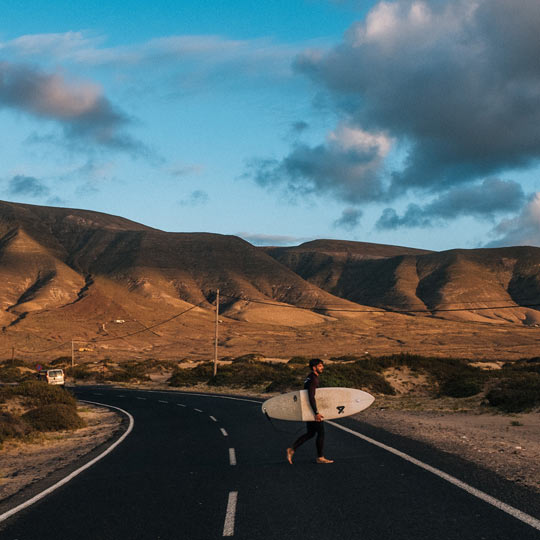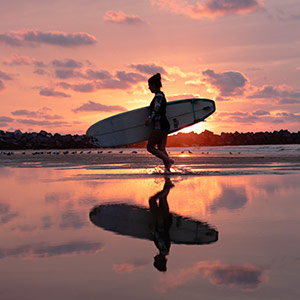Why Spain
Because of its spectacular beaches, famous among surfers the world over, which are perfect for surfing and with a wide range of sea floors and breakers.Because it has a great variety of waves, some famous throughout the world.Because of its warm climate, range of wind types and currents.Because of its numerous surf schools and companies offering surf courses and surfing-themed accommodation.Because it's a venue for surfing-themed festivals, often combined with other types of complementary activities like music, cinema or yoga.Because Spain's the destination chosen by some of the world's top surfers.










